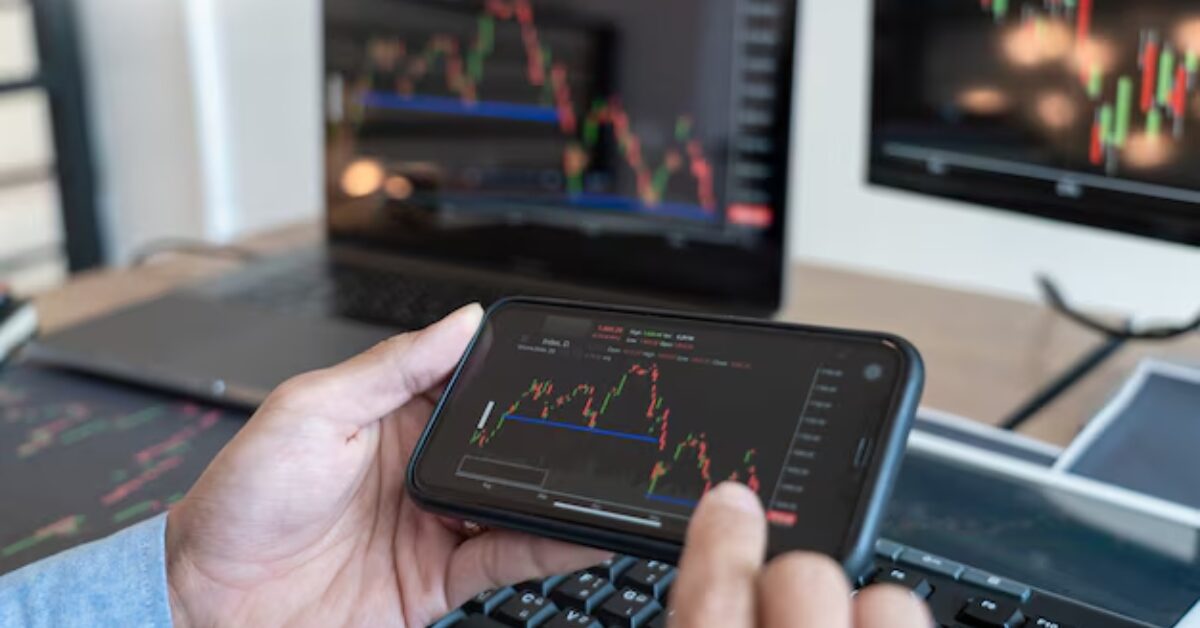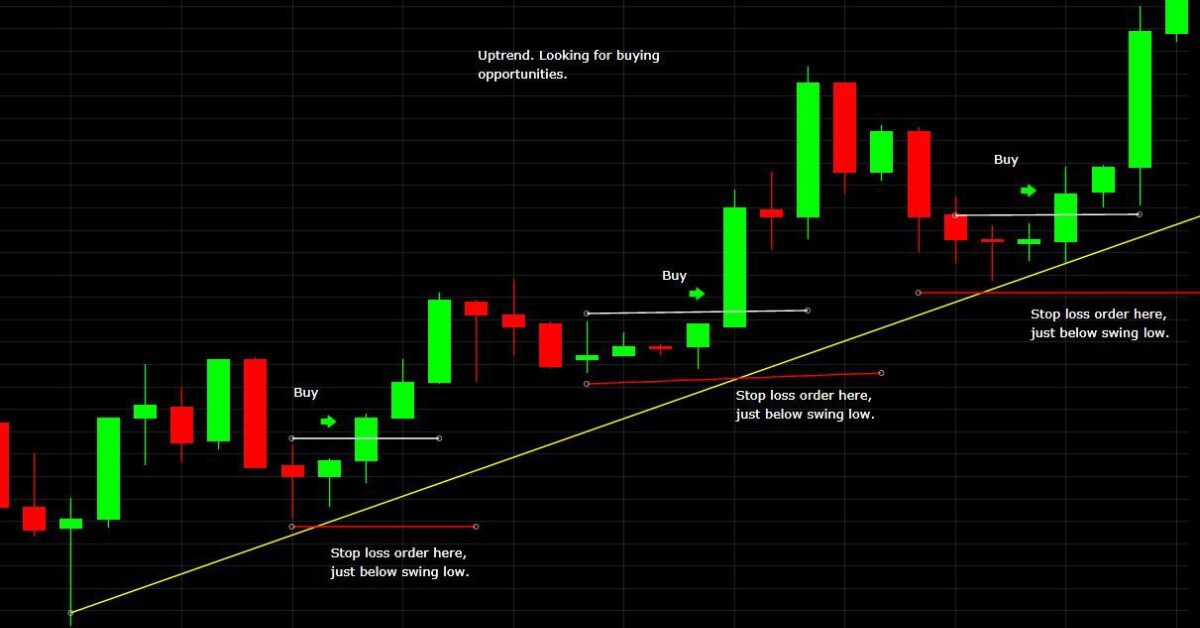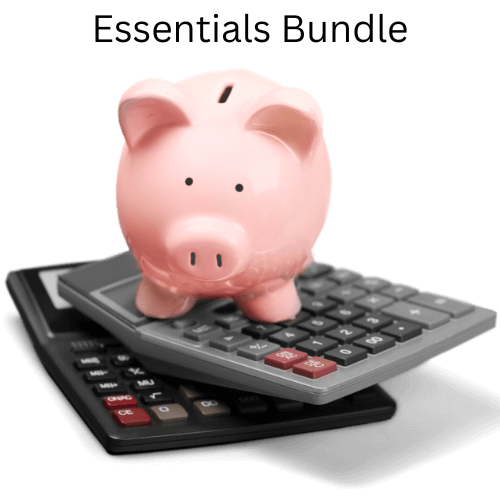Risk management is one of the most critical aspects of successful trading. Even the best strategies can fail without it. Every smart trader needs a solid risk calculation method before entering any trade.
You need a reliable platform if you are new to trading or want to improve your skills. Prime XBT offers advanced tools and resources that help you analyze trades and manage risk effectively. Their platform is designed for beginners and experienced traders who want precision in every move. So, join PrimeXBT today! Use promo code PRIMEOTT to receive a +7% bonus on your deposit.
This blog will break down the Formula used to calculate trading risk. You’ll learn how to determine your position size, use stop-loss effectively, and balance your risk-reward ratio. Whether you’re trading crypto, forex, or commodities, mastering this Formula is essential for long-term success. Keep reading to learn more.
What is Risk in Trading?

In trading, risk refers to the potential for losing part or all of your investment in a given trade. Every time you open a position, you are exposed to uncertainty — and that uncertainty is what we call risk.
Risk can come in many forms. One of the most common is market risk, which is the possibility of prices moving against your trade. Other types include liquidity risk (when it’s hard to buy or sell an asset quickly), operational risk (caused by technical errors or human mistakes), and systemic risk, which affects the entire market due to economic or political shifts.
Traders often focus on position risk, which relates to how much they stand to lose on a single trade. This depends on the entry price, stop-loss, and the position size. If you don’t manage position risk properly, a few bad trades can quickly wipe out your account.
Understanding trading risk is the first step toward managing it. Knowing what you could lose can help you prepare a plan to protect your capital. Prime XBT provides tools like volatility indicators and customizable stop-loss features to help traders assess and limit real-time risk.
Risk is always part of the game — but with the right tools and strategy, it doesn’t have to be a gamble.
Why Calculating Risk Matters
Many traders focus only on profits, but the real pros focus on risk first. Knowing how much you’re willing to lose before entering a trade separates disciplined traders from gamblers.
Imagine risking 20% of your account on a single trade — and then losing it. Just five losing trades in a row could wipe out your entire balance. That’s why calculating your risk before placing any trade is not just smart — it’s essential.
The risk-reward ratio is one of the most powerful tools in a trader’s toolbox. It tells you whether a trade is worth the potential downside. For example, if you risk $100 to gain $300 potentially, your risk-reward ratio is 1:3 — a favorable setup.
Reliable platforms like Prime XBT help you calculate risk more precisely with built-in analytics and advanced trading features. When you know your risk, you stay in control — and trading becomes a strategy, not a gamble.
Formula to Calculate Risk in Trading

Risk in trading isn’t just a vague concept — it can be measured with a simple formula. This Formula helps you understand precisely how much money you’re putting at stake on any trade.
Risk = (Entry Price – Stop Loss) × Position Size
Let’s break that down:
- Entry Price is the price at which you buy (or sell) the asset.
- Stop loss is the price point where your trade automatically closes to prevent further loss.
- Position Size is the number of units (shares, contracts, or lots) you’re trading.
Example Calculation:
Suppose you buy Bitcoin at $30,000 with a stop-loss set at $29,500. That’s a $500 risk per BTC. If your position size is 0.2 BTC, the total trade risk would be:
(30,000−29,500)×0.2=$100
This means you’re risking $100 on that trade. Knowing this helps you decide whether the potential reward justifies the risk.
Our On Tilt Trading Store makes this process easier by offering tools to set stop-loss levels and calculate potential losses before you trade. This keeps your trading precise and controlled.
The beauty of this Formula is its flexibility — it works for any market: crypto, forex, stocks, or commodities. Whether you’re long or short, the Formula stays the same.
Calculating risk before you trade creates a buffer between emotion and decision-making. You avoid revenge trades and impulse decisions. You deal with clarity — and that’s a trader’s true edge.
How to Determine Your Position Size
Knowing how to calculate risk is one thing — but knowing how big your trade should be is where absolute control begins. That’s where position sizing comes into play.
The basic idea is simple: never risk more than a small percentage of your total trading capital on a single trade. Many seasoned traders stick to the 1% rule—meaning they only risk 1% of their account on each trade.
Here’s the Formula to calculate position size:
Position size = account Risk ÷ Trade Risk per Unit
Let’s break it down:
- Account risk = how much money you will lose on a trade (e.g., 1% of $5,000 = $50).
- Trade Risk per Unit = the difference between your entry price and stop-loss (e.g., $5 per unit).
Using our On Tilt Trading Store’s Position Size Calculator, you can easily manage this. Their interface helps you set stop-loss and take-profit levels, adjust leverage, and fine-tune position size — all before you commit.
Getting position sizing right prevents oversized trades that can blow up your account. It also stops you from playing it too small, which can leave profit on the table. It’s all about balance, protecting your capital while allowing enough room for growth.
What is the Risk Reward Ratio and Why It’s Important

When you’re trading, it’s not just about how much you can win but also how much you’re willing to lose to get there. That’s where the risk-reward ratio comes in. It helps you weigh the potential profit of a trade against the potential loss.
Let’s say you’re considering a trade where you could lose $50 but still gain $150. That’s a strong setup. It means you could be wrong more often than right — and still come out ahead over time. That’s the power of a good risk-reward balance.
Traders who consistently look for strong reward potential compared to the risk they’re taking tend to last longer in the markets. Why? Because even if they lose most of their trades, the winners cover the losses and still leave room for profit.
This ratio also forces discipline. Instead of jumping into every opportunity that looks “good enough,” you become selective. You start filtering trades based on logic, not emotion. And that’s a massive shift for many traders — especially beginners.
Using a platform like Prime XBT can help you stick to this strategy. You can set clear stop-loss and take-profit targets to see that the potential reward is worth the risk immediately. That kind of control keeps your trading sharp and focused.
The risk-reward ratio is more than just a concept — it’s a mindset. It helps you think in probabilities instead of emotions. And over time, that separates consistent traders from the ones who blow up their accounts chasing quick wins.
Key Risk Management Metrics
In trading, mastering risk isn’t just about using a stop-loss or calculating a solid position size. Professional traders rely on several key metrics to understand, measure, and control risk. These tools help them make better decisions, minimize emotional trading, and protect their capital during uncertain markets. Let’s look at some of the most important ones.
1. Win Rate
Your win rate is the percentage of trades that close in profit. For example, if you win 6 out of 10 trades, your win rate is 60%. It’s a helpful metric because it gives you insight into how often your trading strategy works. However, a high win rate doesn’t guarantee success if your losses exceed your wins — balance is key.
2. Drawdown
Drawdown shows how much your trading account has declined from its highest point. For instance, if your account drops from $10,000 to $8,000, that’s a 20% drawdown. It’s important because large drawdowns are harder to recover from. Keeping drawdowns small helps maintain your confidence and gives you a better chance of long-term market success.
3. Risk Per Trade
This is the percentage of your total account that you’re willing to lose on a single trade. Most experienced traders keep this between 0.5% to 2%. Controlling your risk per trade protects you from catastrophic losses. Even during a losing streak, your account stays intact, giving you room to keep trading and improving.
4. Reward Consistency
It’s not enough to have a few big winners. What builds an account is steady, repeatable profits. Reward consistency means aiming for trades that offer a reliable return over time. It helps you avoid relying on luck or emotional decision-making. Traders who focus on structured setups with consistent outcomes tend to grow their accounts more sustainably.
Common Mistakes Traders Make with Risk

Even with the right tools and knowledge, many traders still fall into common traps that put their capital at risk. These mistakes can be costly, Whether due to emotion, inexperience, or overconfidence. Recognizing them early on is critical to becoming a more disciplined and successful trader.
1. Risking Too Much on a Single Trade
One of the biggest mistakes of new traders is putting too much money into one trade. It might seem like a shortcut to big profits, but it often leads to significant losses. If that trade goes against you, it could wipe out a large portion of your account. Keeping your risk small helps you survive bad trades and stay in the game longer.
2. Ignoring Stop-Losses
A stop-loss is your safety net. Ignoring it or removing it mid-trade is like skydiving without a parachute. Some traders let emotions take over, hoping the market will “come back.” But hoping isn’t a strategy. Using stop-loss orders helps you cap losses and trade confidently, knowing you’re protected against sudden market moves.
3. Not Calculating Position Size Properly
Jumping into trades without calculating the correct position size is a fast way to lose control of your risk. Many traders guess their lot sizes or copy others — both risky moves. Learning how to size your positions based on account size and stop-loss distance is essential to keeping your losses manageable and your strategy consistent.
4. Chasing Losses After a Losing Streak
After a few losses, traders often feel the urge to win it all back quickly. This usually leads to revenge trading — increasing risk, taking impulsive trades, and blowing up accounts. The smart move is to step back, review your trades, and stick to your original plan. Patience and discipline are your best tools during losing streaks.
How to Use Risk Formula in a Trading Strategy

Knowing the risk formula is one thing — using it effectively in a live trading strategy is another. Successful traders don’t just calculate risk for the sake of it; they integrate it into their every decision. Risk formulas can guide your trade size, stop-loss placement, and overall strategy, giving you long-term control over your trading.
1. Set a Maximum Risk Percentage Per Trade
Decide how much of your total trading capital you will risk on a single trade. Most experts recommend 1% or less. This small percentage helps prevent significant losses and keeps your emotions in check. It also gives you more chances to trade, even if a few setups go against you. Consistent risk limits create consistent results.
2. Determine Your Stop-Loss Level
Your stop-loss defines where you’ll exit a losing trade. It should be based on technical analysis, not just a random number. Set it where the trade setup becomes invalid — for example, below a key support level. Once you know how many pips, points, or dollars you’re risking, you can calculate position size using the Formula and keep your exposure under control.
3. Calculate Position Size Using the Risk Formula
With your stop-loss and max risk percentage in mind, plug the numbers into your Formula. This tells you how significant your trade should be. You’re no longer guessing or going with your gut — you’re making decisions based on logic and numbers. This removes a lot of emotional pressure from your trades.
4. Stick to the Formula
Markets are emotional, fast, and unpredictable. You may feel tempted to ignore your risk rules when a setup looks “too good to miss.” Sticking to your calculated risk strategy ensures long-term survival and helps you build discipline — a trader’s most valuable skill.
Final Thoughts
Calculating and managing risk is the core of every successful trading strategy. Without it, even the best setups can lead to significant losses. Stay disciplined, apply the Formula consistently, and always respect your limits.
Looking for practical tools to simplify your risk calculations? You can find premium trading calculators and other risk management essentials at the On Tilt Trading Store. Trade wisely, protect your capital, and keep your edge sharp.

